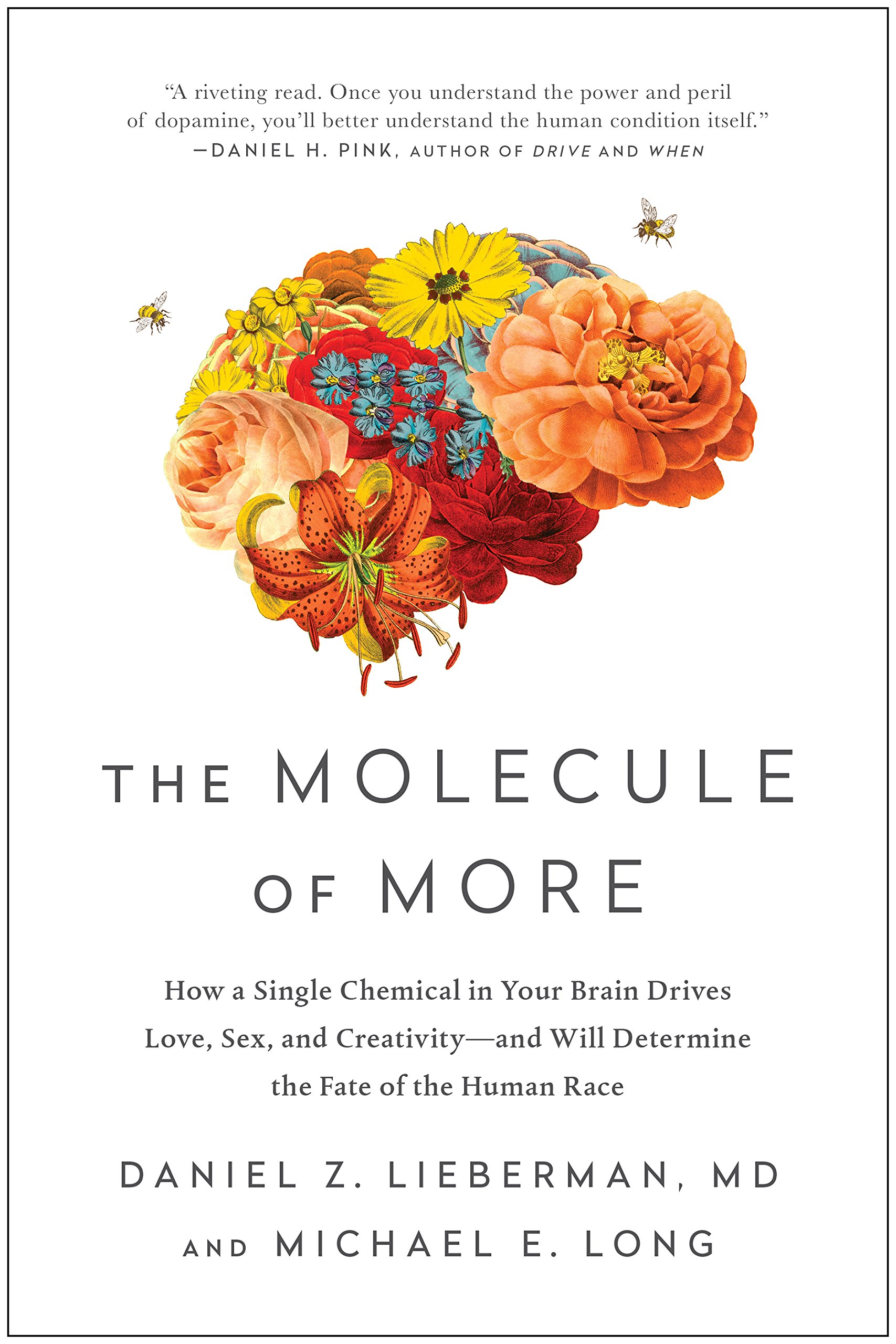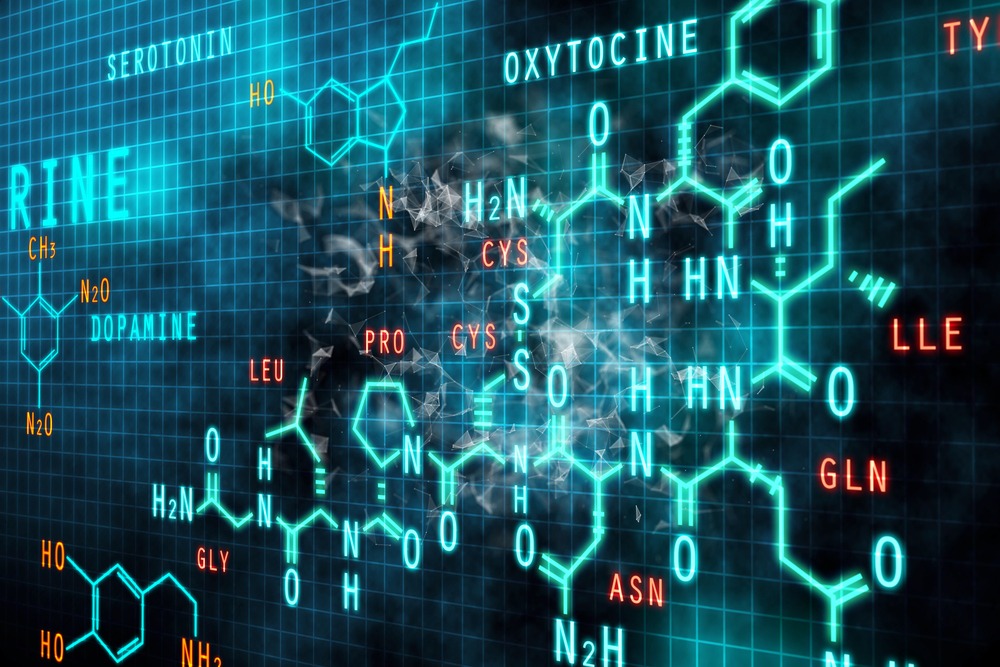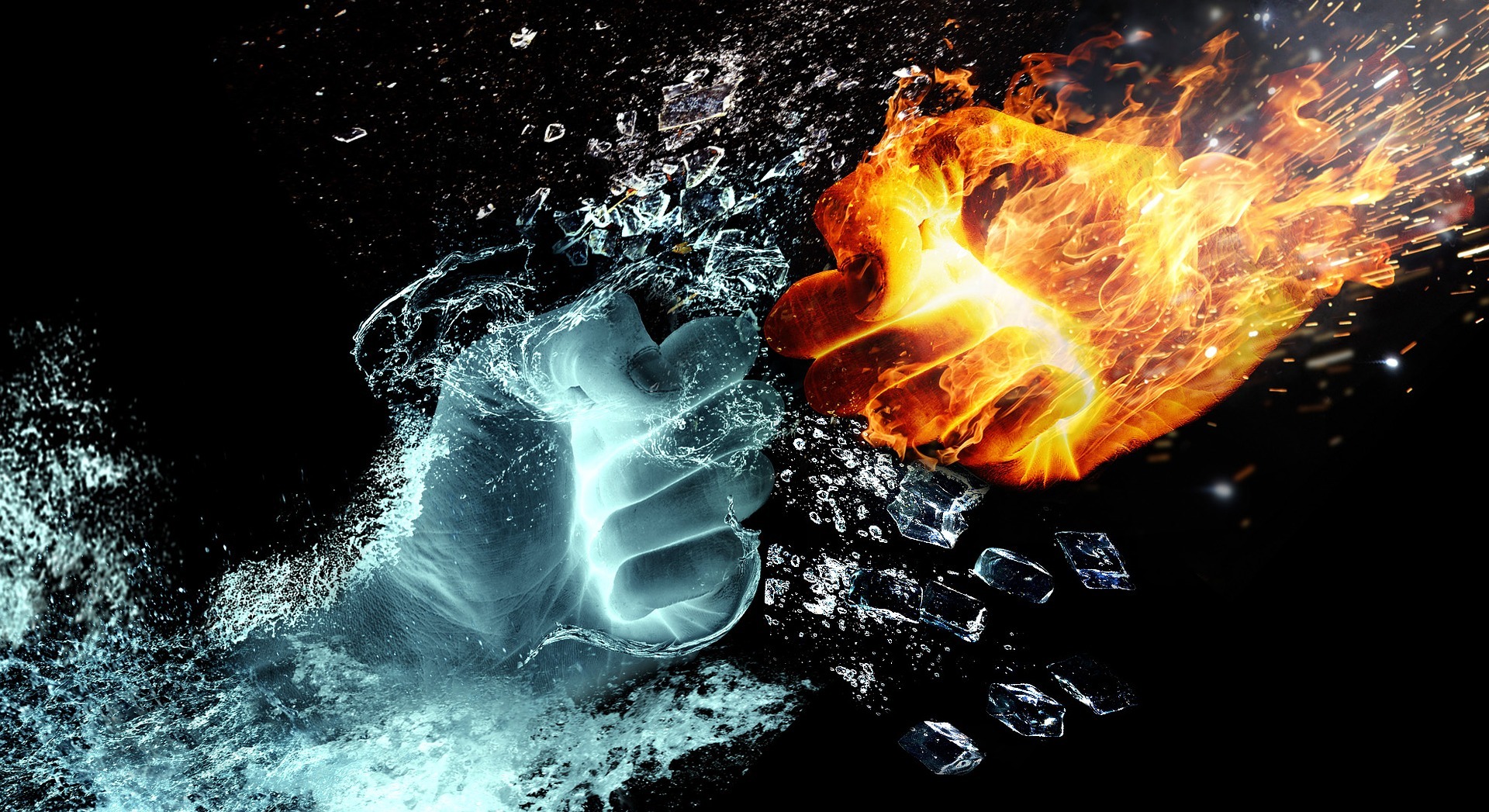THE MOLECULE OF MORE
by Daniel Z. Lieberman, MD and Michael E. Long
BenBella Books, August 14, 2018. 240 pp.
Here at Third Factor, we love frames for making sense of the experiences of creative, gifted, and divergent people. Recently, I stumbled across a book that offered a new one—and this frame tells us a lot about why we are the way we are.

The book, The Molecule of More, is the story of the neurotransmitter dopamine and its role in individual lives and human civilization. Although I have not performed any scientific tests on our readership, I’d bet that there is considerable overlap between those people we at Third Factor describe as overexcitable and those the authors of this book describe as “highly dopaminergic.” The latter group includes, after all, artists, scientists, activists, and others who orient their lives around overcoming the unsatisfactoriness of the present.
The authors of the book are Dr. Daniel Z. Lieberman, a professor of psychiatry at George Washington University who has discussed mental health on CNN and PBS and contributed to textbooks on bipolar disorder—and also published a book of fairy tales; and Michael E. Long, a lecturer in writing at Georgetown University as well as an award-winning screenwriter, playwright, and speechwriter—who has also trained as a physicist. I was fortunate enough to get to sit down with the authors and ask them some questions of particular interest to Third Factor readers. Even so, our conversation only skims the surface of the themes they cover in their book: with chapters on love, drugs, domination, creativity and madness, politics, progress, and harmony, you can probably see why those people I like to call “potential human catalysts” might find The Molecule of More intriguing.
It was in part because of its wide-reaching relevance that Lieberman and Long decided to collaborate on a book about dopamine; and in part because collaborative projects are how these two long-time friends have fun. “This was an exercise by two guys who were so tired of just eating lunch together and so bored with things like baseball that we had to come up with something to do to hang out,” Long told me. So when Lieberman came across the work of Dr. Fred Previc—work that they saw as vital but that had gone largely unnoticed by the academy and wholly unnoticed by the public—they realized they had found their next shared project. Previc’s work pointed to a wholly new way to think about awareness and motivation, and one that could be applied across disciplines.
The Power—and Price—of Dissatisfaction
The first thing to understand is that dopamine is all about the future.
“It’s about making the future better than the present,” said Lieberman. And though that may sound innocuous—don’t we all want to make a good future?—it comes at a cost, because motivation to improve the future stems from dissatisfaction with the present. Imagine a twist in the famous story in which the demon Mephistopheles offers Faust anything he wants as long as he accepts one condition: he could never be satisfied. “Dopamine gives us tools—intelligence, drive, and desire,” Lieberman explained. “It does not give us contentment.”
Happiness, on the other hand, is the fruit of a separate system of neurotransmitters, including serotonin, oxytocin, endorphins, and endocannabinoids, to name just a few. Lieberman and Long dub these the “Here and Nows” (H&Ns) because they’re about being in the present. “When H&N circuits are activated,” Lieberman and Long write, “we are prompted to experience the real world around us, and dopamine is suppressed; when dopamine circuits are activated, we move into a future of possibilities, and H&Ns are suppressed.” (17)

Dopamine, on the other hand, stands on its own in directing our future. It even acts as its own opposition, with that single molecule playing two distinct roles inside our brains. Desire dopamine focuses our attention, motivates us, and thrills us. It is at the heart of wanting, even craving when it’s cranked up high. Control dopamine, on the other hand, flows through the part of the brain that deals with the abstract. Control dopamine lets us envision the consequences of giving in to desire dopamine; it is also the wellspring of our ideas, which help us survive in an uncertain future.
“Gifted” or “Dopaminergic?”
Control dopamine is essentially what we measure when we determine someone’s intelligence quotient. This has implications for anyone who has ever scored highly on an IQ test: you are, practically by definition, highly dopaminergic. Therefore, you are not likely to have a strong H&N system, which means you’re not wired for contentment. This sure gives new depth to that line I’ve heard from many who have been dubbed ‘gifted’: “If this is a gift, can I send it back?”
The term “gifted,” of course, is essentially a value judgment, free of any description of what the gift entails. “It’s a reflection of cultural values,” Long observed. “If you’re trying to solve a problem, Einstein is the one you want. If you want a happy marriage, Einstein is not the one you want. So when you say ‘gifted,’ you’re saying you value the power to abstract, not the power to interact.”
That power to abstract is, of course, incredibly useful to modern society. Highly dopaminergic people have pushed society forward—into the future. They are the inventors and artists, the mathematicians and the scientists. “They’re the inspired ones,” Lieberman said. “In a way, we kind of flatter them because they serve us so well.”
But what if we lived in a society that valued happiness in the present above all? In that alternate universe, the label “gifted” would surely be applied toward those with strong H&N systems. These people, gifted in the ability to find contentment, are not as valuable to the economy; they’re of no use to the likes of the Department of Defense; but “they’re wonderfully valuable for their small communities,” Lieberman said. “Their happiness tends to make other people happy. The H&N-dominant are gifted in important ways, but they don’t get that label ‘gifted.’”
As a dopaminergic type myself—and one whose here and now is all the worse because I live far from relatives gifted with strong H&N systems—I see truth in that. That’s one of the reasons I personally am not a fan of the G-word, even though it does point to a real thing that needs a name. “Highly dopaminergic” seems synonymous with another neutral term we proposed in a previous issue, “abstract-intensive.”
“To say ‘abstract intensive’ is a good way to express it,” Long said. “It takes away the value judgment and gives a little more stature to people with an H&N orientation. Going away from the term ‘gifted’ is a wonderful idea, because it avoids the automatic denigration of the people who are good at other things. One system is not better or more useful than the other; it’s just what you value.”
Going away from the term “gifted” is a wonderful idea, because it avoids the automatic denigration of the people who are good at other things. One system is not better or more useful than the other; it’s just what you value.
Michael E. Long
Balancing Present and Future
We’ve been talking thus far about the dopaminergic and the H&N-dominant as though they are two mutually exclusive groups because people tend to be strong in one or the other. But are there any fortunate people out there—people whom we all might agree are truly “gifted”—who manage to be strong in both? Lieberman told me that such people do exist, but they’re rare. They are the ones who have big ideas, who are confident that they can make them a reality—and who are simultaneously warm and genuine, with a knack for making those around them feel comfortable. This combination sets them up well to accomplish great things.
“If you meet someone who is very, very successful, you’re often surprised at how accessible they are,” he explained. “They don’t come across as distant or arrogant, and you can’t believe that person is a CEO of a Fortune 500 company because they seem so down to Earth.”
We can all aspire to such a well-rounded ideal, but Lieberman cautioned that we shouldn’t beat ourselves up if we don’t achieve it. “It’s not a matter of choice or willpower; it’s a matter of biology,” he said. “You’ll go farther in life if you accept what you are, who you are, and what your strengths and weakness are, while gently pushing yourself toward growth. Dopaminergic people in particular tend to be rather harsh upon themselves. Just like they want to improve the external world through creativity, invention, and hard work, they also have very high expectations for their internal world, and that can lead to unhappiness if they’re constantly banging away at what they’re not satisfied with.”
Dopaminergic people in particular tend to be rather harsh upon themselves. Just like they want to improve the external world through creativity, invention, and hard work, they also have very high expectations for their internal world, and that can lead to unhappiness if they’re constantly banging away at what they’re not satisfied with
Daniel Z. Lieberman
But we’re dopaminergic people here, right? So we’re likely to insist on trying to improve ourselves. You may be relieved to know, then, that ‘CEO of a Fortune 500 company’ isn’t the bar at which you must aim if you’re looking for a model of a simultaneously productive and happy life. In the The Molecule of More, we learn about a survey conducted in 2015 to identify the world’s happiest employees. Are they the technology professionals, shapers of the modern world? People in finance, perhaps, with plenty of power and few monetary worries? Biotech, maybe?
Nope. The happiest people were construction workers. “Construction workers,” Long and Lieberman write, “take abstract plans and make them real. They use their minds and their hands. They also enjoy a high degree of camaraderie.” Essentially, they strike an ideal balance between work and friendship, between dopamine and the H&Ns.
“Think about that as a pattern,” Lieberman told me. “It’s not enough to make a lot of money. It’s not even enough to have an important job. It’s ideal to have a job that checks all the boxes. Yes, you want something intellectually stimulating, but you also want the opportunity to socialize—like the construction workers getting together for beers after work.”
Of course, very intense dopaminergic people are often less comfortable in social situations. “They’d rather interact with the book than the person who wrote the book,” Lieberman noted. “They like pure abstract ideas better than messy human beings. But it’s hard—if not impossible—to be happy without good social relationships. So I think that’s one area in which dopaminergic people ought to gently, gently push themselves out of their comfort zone.”

The Stuff That Creativity Connects
Being gentle with oneself is particularly important, because the biology of dopaminergic people also frequently presents another challenge: high levels of dopamine play a role in several mental illnesses, some of which are quite serious.
“The connection between creativity and mental illness is a real big takeaway for folks who are highly creative in the sciences or in the arts,” said Long. The relevant chapter in The Molecule of More is called “Creativity and Madness” for a reason: to be creative is to walk on the edge of a knife. To use my own metaphor, the creative person is the astronaut who must leave the spaceship to accomplish her mission, but who cannot lose her tether to it or she will go careening off into oblivion. To use Lieberman and Long’s, the highly dopaminergic brain is like a high-performance sports car: it’s capable of incredible performance, but it breaks down easily. The book explores many ways that dopamine fuels both creative thought and conditions such as schizophrenia and bipolar disorder.
This is related to the fact that creativity, as Long noted, can be defined as the capacity to connect things that have not previously been connected. Understanding the interplay of dopamine and H&Ns can help us do this more effectively, because this teaches us that nurturing our abilities to perceive, to connect, and to create begins with appreciating the beauty all around us. When Long gives a talk on this subject, he often begins by playing two songs back to back. First, he plays Winchester Cathedral by the New Vaudeville Band, which was Billboard’s No. 1 hit in December 1966. Then he plays the song that knocked it off the top of the chart, the Beach Boys’ Good Vibrations, written by the famously tormented creative genius, Brian Wilson.
“Good Vibrations is a cacophony of things that don’t go together by any stretch,” Long told me, “and yet, it’s now what we think of as perhaps the most wildly creative, beautifully crafted pop music ever. And it works because it’s a combination of the familiar in an unfamiliar way. We take it for granted now, but the sounds this kid used were alien to be combined. That eerie sound was used in horror movies! And he put it in a song. It’s a stunning thing.”
If you’re never in the present, however, you’re never going to perceive the raw material that allows you to make those connections. You’re never going to be present enough to play with already-existing, concrete objects to discover the sounds they produce, which you must do before you can assemble them in a way that no one has yet.
“I teach creative writing, and the first thing we do in my class is practice describing things,” Long said. “The writer has nothing to write about if the writer can’t be present. Living in the moment fills up that hunger in the imagination with materials that can be reorganized, manipulated, and formed into something new through the power of control dopamine.”

That is also, I realized, what those construction workers do. The wood, steel, and cement that go into a building are just more wood, steel, and cement, but the building that they create is new and unique. But there are two more factors that go into their fulfilling balance of dopamine and the H&Ns.
One is that the construction workers see the project through from beginning to end. And that, in the era of mass production, is a rare privilege. “Adam Smith says an individual can make a dozen pins in one day, but a group of people dividing up the task can make hundreds,” Lieberman said. “And that’s wonderful because it leads to lots and lots of resources, but in terms of the work, it’s actually dehumanizing. It’s so much more satisfying to follow a piece of work from the beginning to the end and to see that end result. I think that one thing that we’re going to want to consider going forward, as we’re able to produce our necessities, is that maybe it’s okay to trade some efficiency for satisfaction, to trade a little prosperity to get back a little more of our humanity.”
I think that one thing that we’re going to want to consider going forward, as we’re able to produce our necessities, is that maybe it’s okay to trade some efficiency for satisfaction, to trade a little prosperity to get back a little more of our humanity.
Daniel Z. Lieberman
And as Lieberman noted, some people are already making this choice on an individual scale. More and more people are trading mainstream jobs for something that pays a lot less but gives them more satisfaction. “You know about the website Etsy, right?” Lieberman said. “People who are selling on Etsy are making hand crafted things. When you read the descriptions, you can tell that these are very smart people making very small amounts of money, but you also sense that there is a love for what they do. If they were making ten times as much money, there’s probably nothing they could buy with that money that gives them as much pleasure as earning a living making beautiful things.”
I could certainly relate, as someone who left her own prestigious, dopaminergic position as an intelligence analyst for similar reasons, though I personally still sit in front of a computer moving symbols around most of the time. So that element of the concrete and tactile is something I’m going to try to add to my life, too. Making anything is satisfying, but the sort of creative work that brings something concrete into being—whether a craft to be sold on Etsy or the buildings built by those happy construction workers—truly brings people into the realm of the H&Ns, bringing the possibility of contentment ever closer.
The Importance of Purpose
When I described Third Factor’s audience to him, Lieberman suggested that this interview is doing the opposite of preaching to the choir: on the contrary, we are giving ideas about living in the present to the sort of people who are the least equipped to use them.
“These are strongly dopaminergic people, and being strongly dopaminergic is not going to make you happy—though it can be fulfilling and noble,” he said. “In some ways, we overemphasize happiness. A good life doesn’t have to be a happy life; it can also be a life of purpose.”
I agreed. For many of the discontent dopaminergic people I know here in Washington, DC, gaining (or restoring) a sense of purpose is another step that could improve their lives. So many of us show up at our prestigious jobs hoping that our bosses will direct us toward something meaningful that finally—after all our work to get good grades and shiny degrees—will fulfill us. Otherwise, what was the point of all of that school?
“It can be difficult for gifted children to make the transition out of school, because for a lot of them, school encourages them to make simple, pure achievement their purpose,” Lieberman noted. “Getting high scores on standardized tests, getting into good schools—they become used to that feedback. Once school is over and they’re not being judged in that quantitative, concrete way, sometimes things get very difficult for them.” He mentioned an episode of The Simpsons in which the teachers go on strike, and Lisa, an outstanding student, goes into withdrawl because she’s not getting graded. So she begs her mother to step in and evaluate her:
“Gifted programs offer wonderful opportunities to children, but I think they need to take a lesson from the Montessori model, which emphasizes the need for children to create their own approval,” Lieberman suggested. In the Montessori model, he explained, instead of telling students that they did a good job, the teachers ask them to explain what they have done and how they feel about it. Moreover, children aren’t told what to do; instead, they must look at their options and decide what they want to do, so as to learn how to guide themselves as adults. “Finding purpose—that’s the essence of Montessori,” he said.
As it happens, I attended a Montessori school myself from kindergarten through third grade, and I’ve long been a fan of the model, though I know it from a child’s perspective and have little conscious understanding of what guided my teachers. But this much I can say: when I did finally get moved to a traditional school and had to sit behind a desk all day, doing what the teacher said, when the teacher said it, I was completely bewildered. Reflecting as an adult, I agree that purpose fell out of the equation entirely.
But what of those of us who are already adults? How can highly dopaminergic people set aside the pursuit of happiness and actually feel the happiness that’s already within their grasp? For abstract-intensive information sponges, Long suggested that understanding the neurochemical foundations for one’s feelings can help.
“Dopamine does nothing but make promises,” he said. “But as soon as you get whatever it promised, you know what dopamine does then: it shuts off. It promises satisfaction, which is the one thing it can’t deliver. Neurochemically, that’s not what it provides. It only provides the urge. So if you’re someone who lives his or her life in constant pursuit, you have to ask yourself, ‘Why am I pursuing it?’ You need to get in the habit of recognizing when an urge is satisfied and experiencing satisfaction.”
If you’re someone who lives his or her life in constant pursuit, you have to ask yourself, “Why am I pursuing it?” You need to get in the habit of recognizing when an urge is satisfied and experiencing satisfaction.
Michael E. Long
And that’s not something we do automatically, especially if we’re highly dopaminergic. Perhaps you’ve been looking forward to having a boat, because the abstract image you envision of the boat appeals to you in some way; and then you achieve the boat and realize you don’t know how to sail the thing. “Experience what you have with your senses and your emotions,” Long said. “The pursuit of romance is quite intoxicating; the quotidian experience of marriage is a different kind of enjoyment. Highly dopaminergic people are in danger of never really exercising this. For all their claims of superior intellect, it’s as if they have strong legs to carry them anywhere, but they can’t pick up anything because their arms are so weak.”
H&N and Dopamine: Teaming Up to Save the World?
Given the difficulty people face in balancing their own internal dopaminergic and H&N systems, is there any reason to hope we could pursue balance in the external world? Is there some way we could, perhaps, team up?
“That’s a tough question,” Lieberman said. “On the one hand, you would think it would be good to mix these people together, because their strengths would complement one another. On the other hand, it’s going to be challenging for them to understand and like one another.” Dopaminergic people, he suggested, often find H&N people uninteresting, because the H&N people don’t want to talk about philosophy; they want to talk about last weekend’s football game or gossip about what’s been going on with their friends and relatives. The H&N people, meanwhile, find the dopaminergics to be cold, aloof, and arrogant. The tension that exists between these two systems inside of us—between the abstract and the concrete, between the future and the present—exists between people as well.

Occasionally, however, effective dopamine-H&N alliances do manage to form. Consider this story of a congressional couple whom Lieberman knew indirectly: the congressman husband was ambitious and driven, but not good at all with socializing—a major drawback in a line of work that requires quite a lot of schmoozing. The congressman’s wife, however, was the opposite, so they went to parties as a team. The congressman’s wife stood right next to him, whispering in his ear the names of people as they approached, what they found emotionally important, and what the congressman should say to them. It was an incredibly effective partnership.
“But you know, they had the benefit of love gluing them together,” Lieberman noted. “If you try to create a team at work of dopaminergic and H&N people, you’re not going to have that sticky glue.”
Love is surely a powerful force, and families and other groups that are bound with it may therefore have a chance to create such effective teams. But if you’re one of those dopaminergic people who, as Lieberman and Long write, “are passionate about people but have little patience for them as individuals,” (137) there’s still hope. You can put the power of dopamine to work on this problem if you decide, based on your ideals and your abstract understanding, that you value what the H&N types have to offer.
That’s why, Long suggested, the burden falls to the dopaminergic. They have the energy for it; they get the chance to control these energies in line with some greater purpose; and they get to exercise the skills they’re best at. “You can make yourself more mindful; you can’t make yourself more dopaminergic quite as easily,” he said. “What’s more is that the dopaminergic people have a great deal to gain. If you’re aware that the most effective motivation you have is the dopaminergic urge, you can then decide to explore the sensory experience of something.”
The need to bridge the gap between dopamine and the H&Ns is bigger than just personal tranquility. As the authors argue in the last two chapters, “Progress” and “Harmony,” dopamine has fueled the rise of human civilization—and has the potential to fuel it right off a cliff. The philosopher, the academic, the hedonist, the artist, and the spiritual person all have forged their identities through dopamine. But dopamine also gave us the atomic bomb. It gave us the fossil fuels that made modern prosperity possible and that are on track to make it impossible. The penultimate chapter explores more of the gifts and curses of a civilization that “drives us to be all dopamine, all the time.” (212)
“Historically, every nation falls,” Long told me. They overreach; they exhaust themselves. With this in mind, the authors spent a lot of energy pondering the most likely resolution of dopamine’s epic tale. “There’s the pessimistic outcome,” Long said, “which is that eventually, society will indeed achieve overreach and destroy what is available—and that this is inevitable.”
“The other way to look at it is to say that no matter how seemingly intractable the problem is, and no matter how hopeless people feel, history is rife with wonderful, happy surprises—with ingenuity. That ingenuity is nothing more than the exercise of control dopamine spurred on by desire dopamine. We contain the seeds of our own destruction, but we are also contain the biological ability to save ourselves in the nick of time. So I’m optimistic. But that doesn’t mean it won’t be a hell of a ride.”
We contain the seeds of our own destruction, but we are also contain the biological ability to save ourselves in the nick of time. So I’m optimistic. But that doesn’t mean it won’t be a hell of a ride.
Michael E. Long
For humanity to triumph, it seems we will need both dopamine and the H&Ns, which we can exercise our control dopamine to develop. Once dopaminergic people see the value in doing so, they might have a chance of succeeding: “It’s not so different from deciding to make time to exercise or eat right,” Lieberman said. “They know that the dopaminergic circuits they value so much will function best if they have a healthy body—and also if they have H&N support. So if they make developing their H&N system into a way of improving their future, they might have more luck.”
This sounded familiar to me because it’s the core teaching of mindfulness meditation—a practice that is popular these days among highly dopaminergic people living in the abstract world of the future. Lieberman agreed that this is absolutely the sort of thing he’s talking about. “I would just say mindfulness is very hard for the very dopaminergic—probably impossible for people who have ADHD,” he cautioned. “By all means, reach for that brass ring, see if you can do it. But if you can’t, don’t beat yourself up: it’s your biology.”
And you don’t need to sit still and focus on your breath. The very first thing people who want to develop their H&N systems should do, Lieberman said, is to see if they can spend ten percent more of their day in the here and now—particularly when they are interacting with other people.
The very first thing people who want to develop their H&N systems should do is to see if they can spend ten percent more of their day in the here and now—particularly when they are interacting with other people.
Daniel Z. Lieberman

“When you’re with someone who is talking to you, try to do nothing else but listen to what that person is saying,” Lieberman suggests. “You will be tempted to other things: you might be thinking about what you’re going to say next, or you might get inspired by something the person says, so your mind goes off pursuing that train of thought. Resist both of those impulses. Do nothing but be there with that person, listening as carefully as possible.”
Lieberman noted that young psychiatrists who have finished medical school and are just staring out are often overwhelmed by psychotherapy. “They’ve got to sit in the room for fifty minutes with a patient and, using only words, devlop a therapeutic intervention,” he explained. “We tell them not to stress out about this. There’s one thing they can do—that anyone can do—that has an extremely powerful effect: listen to the patient with all your attention. It sounds easy, but it’s rarely done. So when you do it with a patient, they receive it as something very different from socializing. It’s extremely powerful.”
Ultimately, those of us with highly dopaminergic systems are both biologically programmed and socially conditioned to be all dopamine, all the time. But even as we respect this fact of our biology, Long offered this reminder: “You’re also not a slave to your biology.” Dopamine flowing in our desire circuits can also make us crave sweets, but control dopamine can help us decide not to indulge in them—to choose something that’s not pure sugar. “Wine isn’t as sweet as a sugary Coke, but many dopaminergic people still grow to appreciate the more sensory, delicate experience of wine.”
Perhaps sitting down to a drink with someone who’s a bit different from you and really listening to them, in the here and now, is the first step to take as you look into the future and pursue your purpose, whether that purpose is halting climate change, reversing political polarization, or any other grand goal your dopamine directs you to pursue.
And the second step is to check out The Molecule of More. It’s chock full of both compelling anecdotes and scientific citations that go well beyond what we discussed here. I for one couldn’t put it down.
Interested in checking it out?
- See if you can find it in a library near you.
- Barnes and Noble has it new…
- …and so does Amazon. If you’d like Amazon to give 10% of the profit to Third Factor, you can follow this link to purchase.




